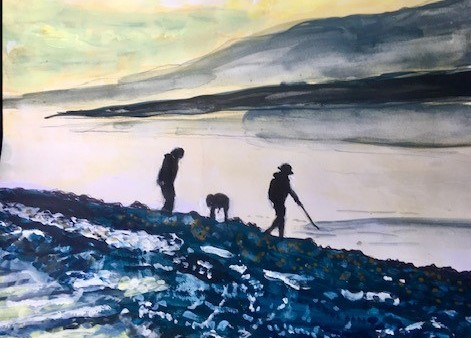We are using art therapy to help our service users take on more meaningful roles and activities. The pieces produced which are inspired from personal journeys and experience have been exhibited and now sold on by the Harris Museum.
The exhibition collection titled, Guild Lodge, was created during occupational therapy (OT) sessions with Guild Lodge art instructors and occupational therapists, Simon Wess and Mark Love.
Mark said:
“We place great importance on the use of art as both assessment and treatment within a secure setting, and run one to one sessions as part of our therapy programme.
Being in a secure setting can limit roles for our service users and as part of OT we look at widening meaningful roles and activities. Art allows people to be autonomous, make decisions and set goals around aiming towards an exhibition. This also allows the public to see what we and our service users can do, which helps destigmatise being a mental health patient.
One service user from the acquired brain injury (ABI) ward created two pieces of artwork using pictures of his dad and brother out on the shores picking cockles. The OT art session also allows us to assess a person’s cognitive and communication skills by asking the patient to talk about their role in the project and how it made them feel to get to the end product.”
Guild Lodge has exhibited service user artwork at the Harris Museum for the last several years, including winning a bid to create a collective piece of art last Christmas. ‘Veil of Keys’ which is painted mainly white and gold, the colours are to represent ‘Kintsugi’, a Japanese art of celebrating the ‘perfectly imperfect’.
Mark continued:
“Most importantly art is great for self-esteem and confidence, especially when a service user can see their art work has been sold. Many pieces were sold from our latest collection at the Harris with all proceeds coming back into the service.”
Not stopping there, an ABI inpatient has this week re-created a famous Monet painting to help mark the start of Learning Disability Week (14-20 June). The piece, which is an interpretation of Effects of Spring Giverny 1890 by Claude Monet was chosen due to its brightness, bold use of colours and textures hoping to provoke “joy” and “imagination” to all who view it.
To help raise awareness during Learning Disability Week, the piece will be dedicated to one of our teams at Darwen Resource Centre for all Learning Disability service users and team to enjoy.



